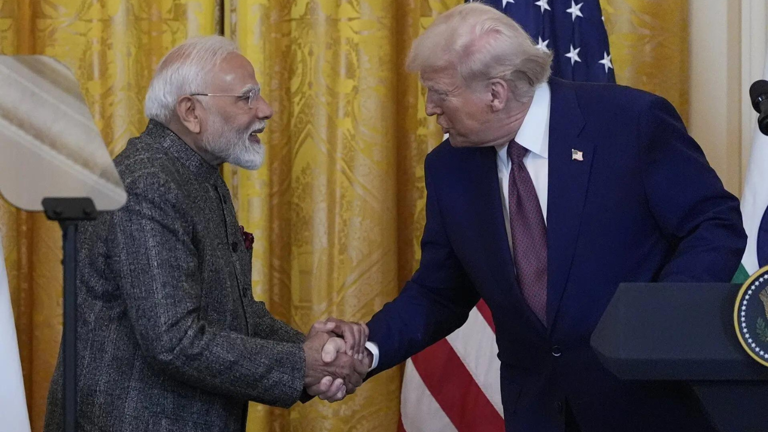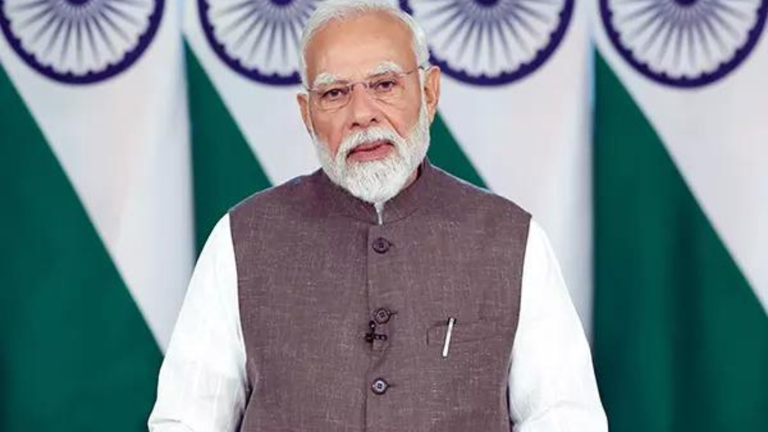US Plans 26% Tariff Return After July 9; India Scrambles for Exemption
As global trade tensions simmer, former US President Donald Trump has confirmed he will not extend the tariff suspension granted to several countries, including India, beyond July 9, 2025. The warning comes just as India’s trade delegation decided to extend its stay in Washington, seeking to negotiate an interim relief deal that could prevent the re-imposition of steep 26% tariffs on Indian exports.
The suspension, introduced under the Trump administration’s renewed trade offensive on April 2, temporarily halted additional global duties for 90 days. But Trump has now told Fox News that “letters will go out” to affected nations if agreements aren’t reached before the July 9 deadline. With talks still underway, India is scrambling to secure full exemption, fearing that any failure may disrupt key sectors such as textiles, pharmaceuticals, and auto parts.
Trump’s ‘No Extension’ Drama: 10 Days Before Tariffs Bite Back
Donald Trump’s message is clear: the world has had its 90-day grace period, and the US is now preparing to re-impose 26% reciprocal tariffs unless countries agree to new trade terms. The 10% baseline duties from April remain untouched, but the looming expiration of the temporary pause has sent ripples across international markets.
“We are not extending the tariff moratorium. The world needs to play fair now,” Trump told Fox News, reiterating his tough-on-trade policy.
Trump is giving us uncertainty in the markets.
— DividendLearning (@Dividend_Learn) June 30, 2025
He doesn't think that deadline for tariff will be extended but then added, "I could, no big deal".
Next few days will be interesting.
The US is reportedly drafting individual letters to countries outlining the penalties they will face post-July 9. For India, this could mean billions in added costs across key exports, potentially eroding its competitiveness in the US market. At risk are MSME-heavy industries like garments and footwear, which depend on tariff-free access to American buyers.
For Trump, reinstating tariffs is part of a broader agenda to restructure global supply chains in favor of domestic manufacturing. Analysts say it is also a political message in an election year—to show that the US will no longer be taken advantage of in trade relationships.
India’s Diplomatic Sprint: Trying to Trade Sense with a Tariff Bulldozer
India’s delegation, originally scheduled to leave Washington by June 27, has now extended its stay until early July, trying to clinch an interim trade agreement before the deadline. According to Indian officials, the goal is to secure a complete carve-out from the 26% reciprocal tariffs—not just partial relief.
However, the US is pushing back with its own demands. Washington wants greater Indian market access in sensitive sectors like agriculture, dairy, and processed food, where India traditionally maintains high barriers to protect domestic farmers. Indian negotiators are reportedly considering phased access plans and quota-based concessions to balance US demands with political sensitivities back home.
Despite Trump’s hardline stance, both sides have expressed optimism. An Indian commerce ministry official stated, “We believe there is still a window to strike a deal.” The Biden administration, while not directly interfering with Trump’s plan, has encouraged a constructive outcome, as bilateral ties remain strong across other domains such as defense and tech.
If talks collapse, India may be forced to retaliate with counter-tariffs or appeal to WTO forums—potentially escalating into a new trade war. For now, the next 10 days are critical, not just for India-US trade but for the broader message it sends on global economic diplomacy.





















